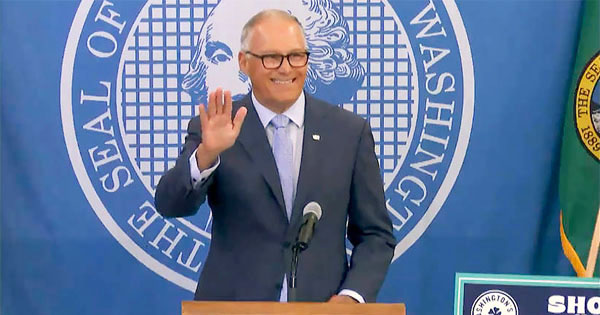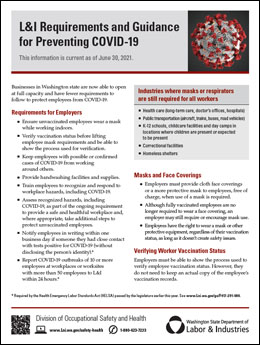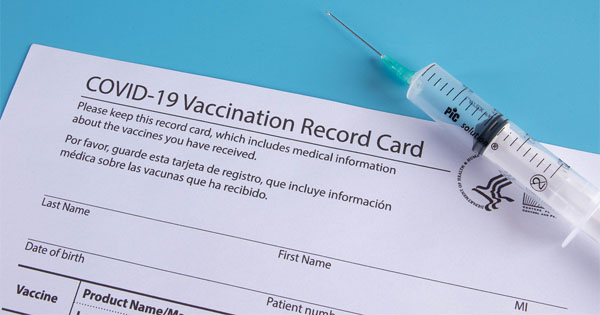STATE GOVERNMENT
Washington lifts most COVID-19 restrictions
L&I offers updated workplace safety guidance for employers, workers
OLYMPIA (June 30, 2021) — Effective today, Gov. Jay Inslee has lifted most of the COVID-19 restrictions on individuals and businesses in place since March 2020 as the state begins to return to normal capacity and operations.

“Because folks listened to science and stayed home to stay healthy, wore masks and got vaccinated, we can now safely fully re-open our state’s economy and cultural centers after 15 long months,” said Gov. Jay Inslee. “It hasn’t been easy, but I’m proud of how Washingtonians came together, persevered and sacrificed to fight this virus, and now we’re finally in a place that is safe enough to end this chapter.”
“Even though Wednesday marks a new stage in our continued efforts to defeat this pandemic, we still have work to do. Continued success depends on everyone getting vaccinated and encouraging any loved one who has not yet received this lifesaving vaccine to do so, and quickly,” he added. “Let’s keep it up, Washington – get vaccinated and stay safe.”
ALSO at The Stand (June 16) — Union members can do this: Get vaccinated! — Ready to get vaccinated? Visit Washington state’s Vaccine Locator to find vaccine appointments near you.
 Here is the latest workplace safety guidance from the Washington State Department of Labor and Industries. (Additional L&I guidance is being reviewed and updated.)
Here is the latest workplace safety guidance from the Washington State Department of Labor and Industries. (Additional L&I guidance is being reviewed and updated.)
Businesses in Washington state are now able to open at full capacity and have fewer requirements to follow to protect employees from COVID-19.
Requirements for Employers
- Ensure unvaccinated employees wear a mask while working indoors.
- Verify vaccination status before lifting employee mask requirements and be able to show the process used for verification.
- Keep employees with possible or confirmed cases of COVID-19 from working around others.
- Provide handwashing facilities and supplies.
- Train employees to recognize and respond to workplace hazards, including COVID-19.
- Assess recognized hazards, including COVID-19, as part of the ongoing requirement to provide a safe and healthful workplace and, where appropriate, take additional steps to protect unvaccinated employees.
- Notify employees in writing within one business day if someone they had close contact with tests positive for COVID-19 (without disclosing the person’s identity).*
- Report COVID-19 outbreaks of 10 or more employees at workplaces or worksites with more than 50 employees to L&I within 24 hours.*
* Required by the Health Emergency Labor Standards Act (HELSA) passed by the Legislature earlier this year.
Industries Where Masks and Respirators Are Still Required for All Workers
- Health care (long-term care, doctor’s offices, hospitals)
- Public transportation (aircraft, trains, buses, road vehicles)
- K-12 schools, childcare facilities and day camps in locations where children are present or expected to be present
- Correctional facilities
- Homeless shelters
Masks and Face Coverings
- Employers must provide cloth face coverings or a more protective mask to employees, free of charge, when use of a mask is required.
- Although fully vaccinated employees are no longer required to wear a face covering, an employer may still require or encourage mask use.
- Employees have the right to wear a mask or other protective equipment, regardless of their vaccination status, as long as it doesn’t create safety issues.

Verifying Worker Vaccination Status
Employers must be able to show the process used to verify employee vaccination status. However, they do not need to keep an actual copy of the employee’s vaccination records.
Acceptable types of verification include:
- Vaccine card or photo of vaccine card.
- Documentation from a health care provider.
- State immunization information system record.
- A hard copy or electronically signed self-attestation from the employee.
When implementing a verification process, employers should consider other laws that may apply.
Guidance for Protecting Unvaccinated Workers
The following information is advisory and intended to help employers provide a safe and healthy workplace. However, there may be specific requirements that must be followed for the industries listed in the box above.
- A COVID-19 vaccine is the best tool to prevent the spread of the virus. Employers should support and encourage workers to get vaccinated.
- Other ways to reduce the risk of COVID-19 transmission for unvaccinated employees include:
- Continuing distancing between unvaccinated employees, especially in indoor areas with poor ventilation or while working with the public.
- Maximizing fresh air and air filtration settings on HVAC systems, and adding filtration in areas with poor ventilation.
- Providing a mask that is more protective than a cloth face covering for unvaccinated workers who are generally not able to maintain distance from other unvaccinated workers or the public. Examples could include surgical masks or KN95s.
- Providing a mask to unvaccinated workers in outdoor crowded settings is strongly encouraged (sporting events, fairs, parades, concerts, and similar settings).
Reasonable Accommodation and Discrimination
Employers must ensure workplaces remain safe and healthy for all, including employees with medical issues or disabilities (see the Americans with Disabilities Act, or ADA).
Additionally, HELSA protects high-risk employees from being discharged, permanently replaced, or discriminated against in the workplace for seeking accommodation from exposure to an infectious or contagious disease during a public health emergency. HELSA is administered by L&I and currently applies to accommodations related to COVID-19.
Resources
L&I’s COVID-19 guidance includes resources from the Centers for Disease Control (CDC), Department of Health (DOH) and U.S. Occupational Safety and Health Administration: www.Lni.wa.gov/CovidSafety
DOH Secretary of Health Order.
Upon request, foreign language support and formats for persons with disabilities are available. Call 1-800-547-8367. TDD users, call 711.





